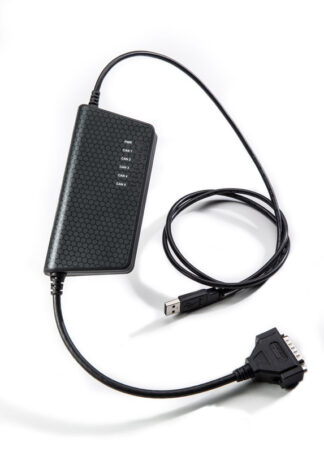
What is Kvaser MagiSync
Kvaser MagiSync™ is a feature of Kvaser’s SemiPro, Pro, Professional and Precision CAN to USB interfaces that enables automatic and accurate clock synchronization across several Kvaser interfaces connected by a common USB hub.
- Automatic and accurate clock tick synchronization.
- Synchronises any number of Kvaser devices that support it, connected by a common hub.
- No extra wiring required (unlike solutions from other CAN to USB interface vendors.)
- Works with any standard PC with a USB host or USB hub.
- A patented technology that is unique to Kvaser.
Each Kvaser USB to CAN interface has a relative time stamp, as opposed to a real time clock. MagiSync ensures that this relative time is the same across multiple interfaces with high accuracy – better than 500 ns. Clock ticks are synchronized automatically and then Kvaser’s free CANlib SDK can be used to place the interfaces in the same time domain.
How does MagiSync™ work?
MagiSync™ synchronisation happens automatically. An offset is continuously applied to the clocks within connected Kvaser’s SemiPro, Professional, and Precision CAN to USB devices to compensate for any drifting that may occur.
To check whether an interface supports MagiSync™ and view the group of MagiSync™ synchronised interfaces, open the Kvaser Device Guide and check the menu item ‘View -> Synchronized Hardware’. For applications requiring clock tick synchronisation across several hubs, MagiSync™ synchronises them all if they are connected to the same root hub. A hub can be inside a PC or a standalone device.
“We use Kvaser U100P units to record data on all our vehicles. Kvaser MagiSyncTM simplifies timestamp synchronisation and gives us peace-of-mind.”
Director of Diagnostics & Calibration at a well-known European automotive Tier 1









